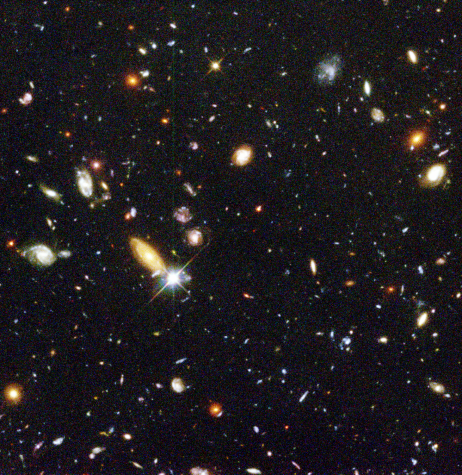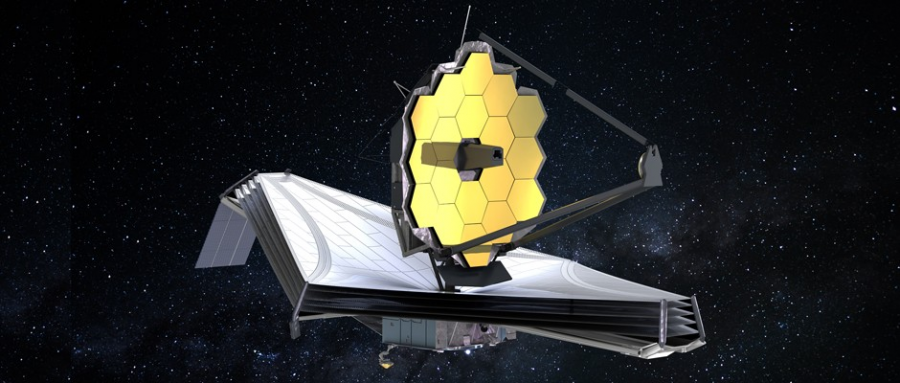A Real Life Time Machine
I’m sure I can speak for almost everyone when I say that we’ve all thought about time travel at some point in our lives. We dreamed about going back in time to see dinosaurs or hopping into the future to see all the flying cars. Of course, these are just childhood dreams and, according to our current understanding of physics, time travel is either impossible or too resource-intensive, and it certainly doesn’t work as we imagined it to. With that being said, we can experience a version of time travel by just looking up into the night sky. This may seem completely fictional, but let me elaborate. Light does not travel instantaneously–while it is very fast, it takes time. This means that every bit of light that is processed through our eyes does not represent what the present looks like. This discrepancy in the time it takes for light to get to our eyes is negligible in many cases (e.g. it takes light 1.3 seconds to travel from the moon to the Earth, which means when we look at the moon we are seeing it as it was 1.3 seconds ago), but the further away an object is, the longer this discrepancy becomes. Every single star we see in the night sky is incredibly far away, so we are seeing them as they were in the distant past. Even the closest star to us, Alpha Centauri, is 4 light-years away. This means that when you look at Alpha Centauri in the night sky, you are seeing it as it was 4 years ago. If the star exploded 3 years prior to observing it, we wouldn’t be able to tell, which makes stargazing a very real form of time travel.
It isn’t possible for the human eye to observe much outside of our galaxy, though. All the stars we see in the night sky with our naked eyes are within the bounds of the Milky Way Galaxy. This means that we are only scratching the surface of observational capabilities when looking at the stars with our eyes. This was all changed by the invention of the telescope. Earth-bound telescopes are susceptible to atmospheric distortions, though, convoluting the quality of images taken by these telescopes. Scientists wished to alleviate this issue, so they designed a satellite telescope. This telescope, called the Hubble Space Telescope, would orbit the Earth and collect high-quality, undistorted images of space. What was even better is that it could focus on one portion of the sky for longer than just a day. On earth, telescopes could only focus on a portion of the sky while it was night but the sun blotted out the stars in the morning. The Hubble was launched, and the images it took by focusing on a tiny portion of the sky demonstrate both the incredible capabilities of Hubble and how observing the stars can be time travel.
 This image, called the Hubble Deep Field image, shows hundreds of galaxies as they were at various points throughout history. The closest galaxies may only be a couple hundred thousand light-years away, but the very faint dots that you can see in this image could be as far as 13 billion light-years away. That means the tiny specks of light in this image are some of the earliest things that ever existed in the universe, and we are seeing them as they were then! Hubble changed the way we see the universe, and a 15-year undertaking is about to change it again.
This image, called the Hubble Deep Field image, shows hundreds of galaxies as they were at various points throughout history. The closest galaxies may only be a couple hundred thousand light-years away, but the very faint dots that you can see in this image could be as far as 13 billion light-years away. That means the tiny specks of light in this image are some of the earliest things that ever existed in the universe, and we are seeing them as they were then! Hubble changed the way we see the universe, and a 15-year undertaking is about to change it again.
The Hubble Space Telescope was launched in 1990, so all these incredible images that we have received from it were taken with very dated technology. Scientists say we need a modern space telescope and for the last 15 years have spent 10 billion dollars building a telescope that is 100 times more powerful than the Hubble. This telescope is called the James Webb Telescope and it is set to launch into space on December 18 of this very year. This telescope could give observable and detailed insight into the way things looked at the dawn of the universe. Perhaps it could even help solve the mystery of the origins of the universe. This is all speculation though, so we’ll simply have to see what incredible images will be taken by the James Webb Telescope.











Madi Proctor • Sep 9, 2022 at 2:53 PM
This is interesting!
Jonathan Tallman • Nov 11, 2021 at 8:29 AM
Fascinating article…I learned a lot!
Chociej • Dec 26, 2021 at 12:09 PM
Chociej